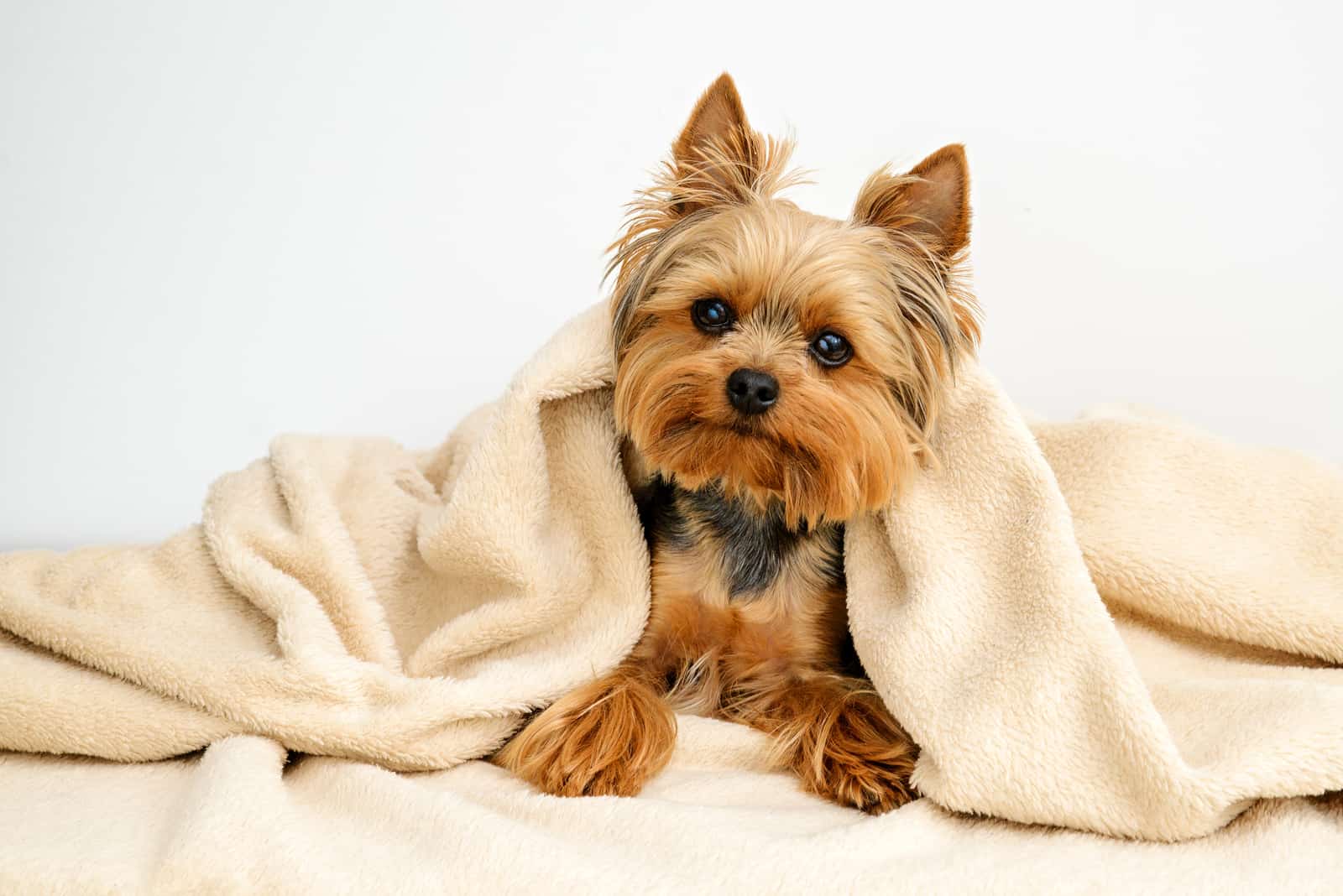So, you’re planning to adopt a Yorkie puppy. That’s wonderful! Have you considered which of the Yorkie colors you’d like?
No?
Well, I’m here to help you. Unlike some dog breeds that have a bunch of different coat colors (yes, I’m looking at you Shih Tzu!), Yorkies only come in a few select coat colors. And they’re all combinations of two or more shades.
But, what about solids? Are they even possible in the Yorkshire Terrier breed? Is there such a thing as a pure black Yorkie?
Do teacup Yorkies come in different coat colors? (Psst, they don’t!)
These, and many more questions, will be answered today.
As I said, I’m here to help and describe each coat color to you and explain why they occur in this dog breed.
I sincerely hope that by the end of this article, you’ll have found a Yorkie color that’s right up your street.
Yorkie Colors Chart
Below, you’ll see which Yorkie colors are standard and accepted by the AKC, and which are not. The second column features rare colors that still need to be verified for their authenticity as purebred Yorkies.
For example, parti Yorkies have recently been recognized as purebred pups of this breed. The approval of the rest is yet to come.
[table id=483 /]
What Are Standard Yorkie Colors?
The American Kennel Club (AKC) is pretty strict when it comes to accepted coat colors of any dog breed, not just Yorkshire Terriers. This is especially important if you plan to enroll your dog into official competitions.
Non-standard colors are considered a fault and won’t be accepted. Dog experts claim that non-accepted colors are a result of poor breeding. I recommend that you support good breeding practices and buy a Yorkie with standard colors.
Now, we’re about to go into depth about all of the standard Yorkie colors. You might as well call them their signature colors!
Black And Tan Yorkie
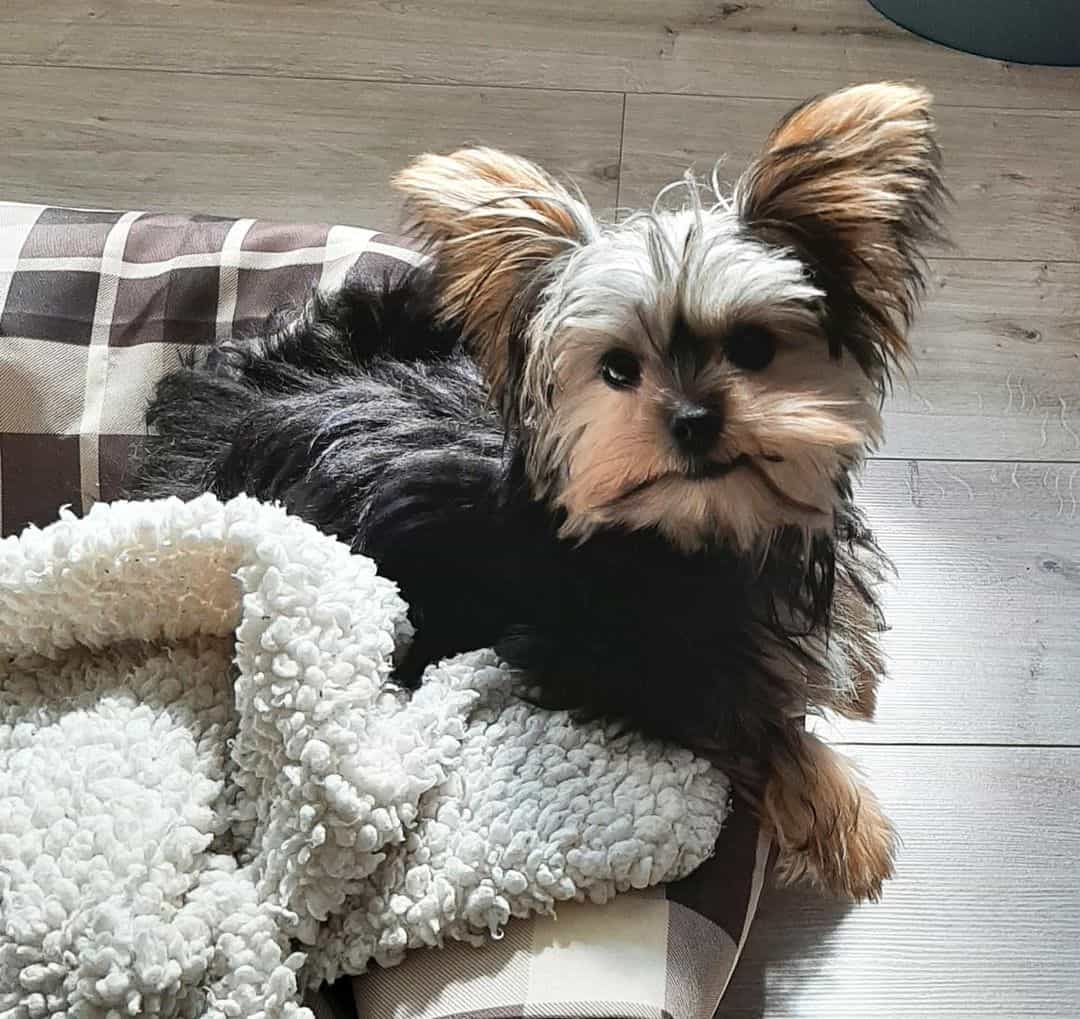
Photo from: @sammy_the.yorkie
The black and tan Yorkie is the typical Yorkie you see when you Google Yorkshire Terriers. Their deep shades of black and tan may or may not stick throughout the dog’s entire lifespan.
If the coat color stays unchanged, that means your Yorkie doesn’t have what experts call the graying gene. I might add, consider yourself lucky, because you’ll actually get what you paid for. Personally, I prefer the coat color to stay the same.
On another note, black and tan Yorkies are my favorite too!
These pups usually fashion a black coat on their torso. The black coloring covers a vast majority of their tiny body. The Yorkie’s legs, chest, inside of their ears, and face are covered in tan color. This is a general rule of color distribution for the black and tan Yorkie.
But, as always, there’s an exception for each rule. Not every Yorkie featuring this coat color will have the same markings, and that’s absolutely fine.
Black And Gold Yorkie
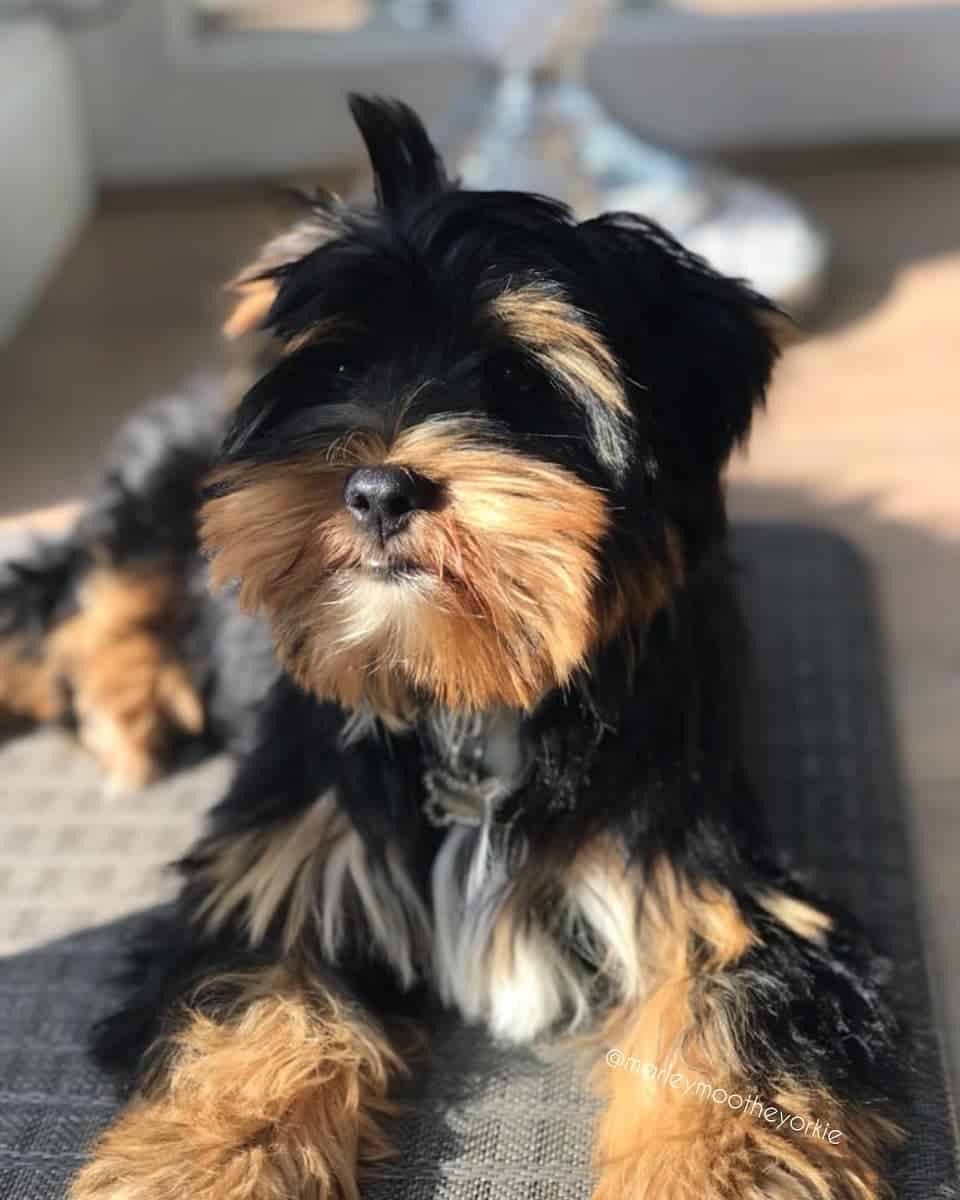
Photo from: marleymootheyorkie
The second most popular of all Yorkie colors is the black and gold Yorkie. This is another lovely color combination, and it resembles the common black and tan Yorkie a lot.
But, if they’re so similar to the previous Yorkie color, what makes them different from our black and tan Yorkies?
The difference is noticeable on the black markings of their coat. You see, black and gold Yorkies have rather lighter black markings than usual. While the color black has no shades, we can notice the difference in intensity of the color with this Yorkie. You catch the drift, don’t you?
This Yorkie has something the previous color doesn’t. It’s the graying gene, hence the change in the color intensity! So, you can say their gold color is actually like tan, but aged.
Blue And Gold Yorkie
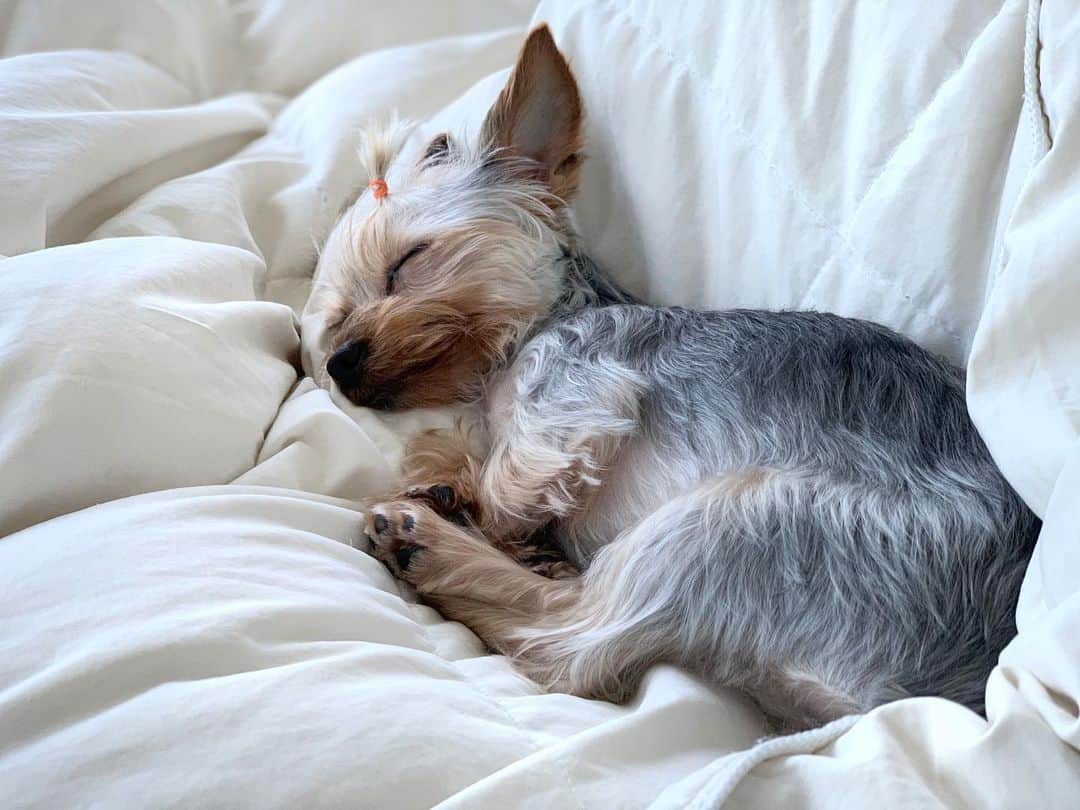
Photo from: @yorkie_hazel_dc
Blue and gold Yorkies are true fashionistas of the family. You’ll recognize them easily since their coat is super shiny. These pups have darker roots, while the tips of their hair are always lighter.
However, the lighter tips are only noticeable on long-haired Yorkies. If you cut your Yorkie’s hair too short, you won’t be able to see the transition from dark to light coat.
The blue and gold Yorkie has their coat color as a result of having two copies of the dominant graying gene.
What you need to know about the blue and gold Yorkie is that this is a combination you won’t find on newborn Yorkie puppies. Also, growing Yorkies won’t exhibit such a coat color. This is one of those Yorkie colors that only adult dogs can fashion.
The reason is quite obvious: it’s a coat color that presents as a result of aging.
Blue And Tan Yorkies
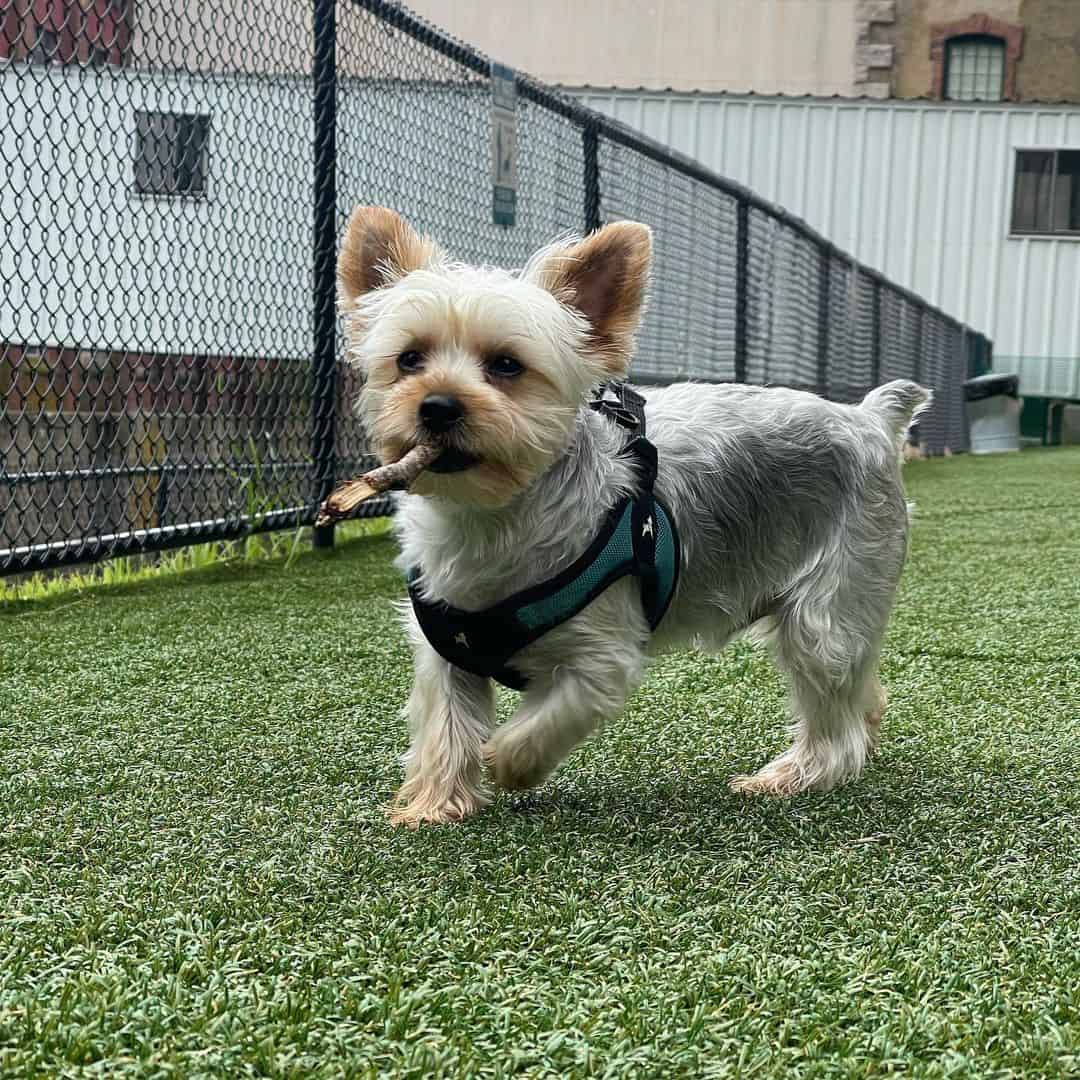
Photo from: @that_pup_cos
The blue and tan Yorkies are also a beloved shade and considered one of the staples when it comes to this dog breed. This coat color is the result of a pigment called pheomelanin. The pigment usually shows itself as a darker version.
Many people have issues distinguishing blue and tan Yorkies from blue and gold Yorkies. When you look at both shades, you’ll realize they’re pretty much the same. It’s the tiny differences that make them what they are.
Also, gold or tan is a matter of subjective opinion. What’s gold for me might be tan for you, and there’s really no point in discussing it.
The bottom line is: blue and tan are as regular as the other three Yorkie colors. Most importantly, the AKC recognizes it as an official color.
Which Yorkie Colors Are Rare?
Lately, I feel like standard or accepted coat colors are becoming rare, and the rare colors are switching seats with them. With every dog breed, including the Yorkshire Terrier, there will be some non-standard colors that will never be accepted by official clubs.
Why is that so?
Rare coat colors are often a result of unethical breeding, breeding two dogs with recessive genes, or crossing the breed with another dog breed. This breeding is being done intentionally to create desired coat colors.
Even though they’re rare, these colors are still pretty desirable, especially by people who don’t realize how important it is to have a happy pup, rather than a fashionable pup.
I mean, all Yorkies are lovely, why does it have to be a specific coat color that attracts you to this dog breed?
If I were you, I’d think twice about adopting a parti Yorkie or any other rare color. That puppy might not have any known health issues at the moment, but think about what could happen in a few years.
To help you recognize rare coat colors, here they are in depth.
Parti Yorkie
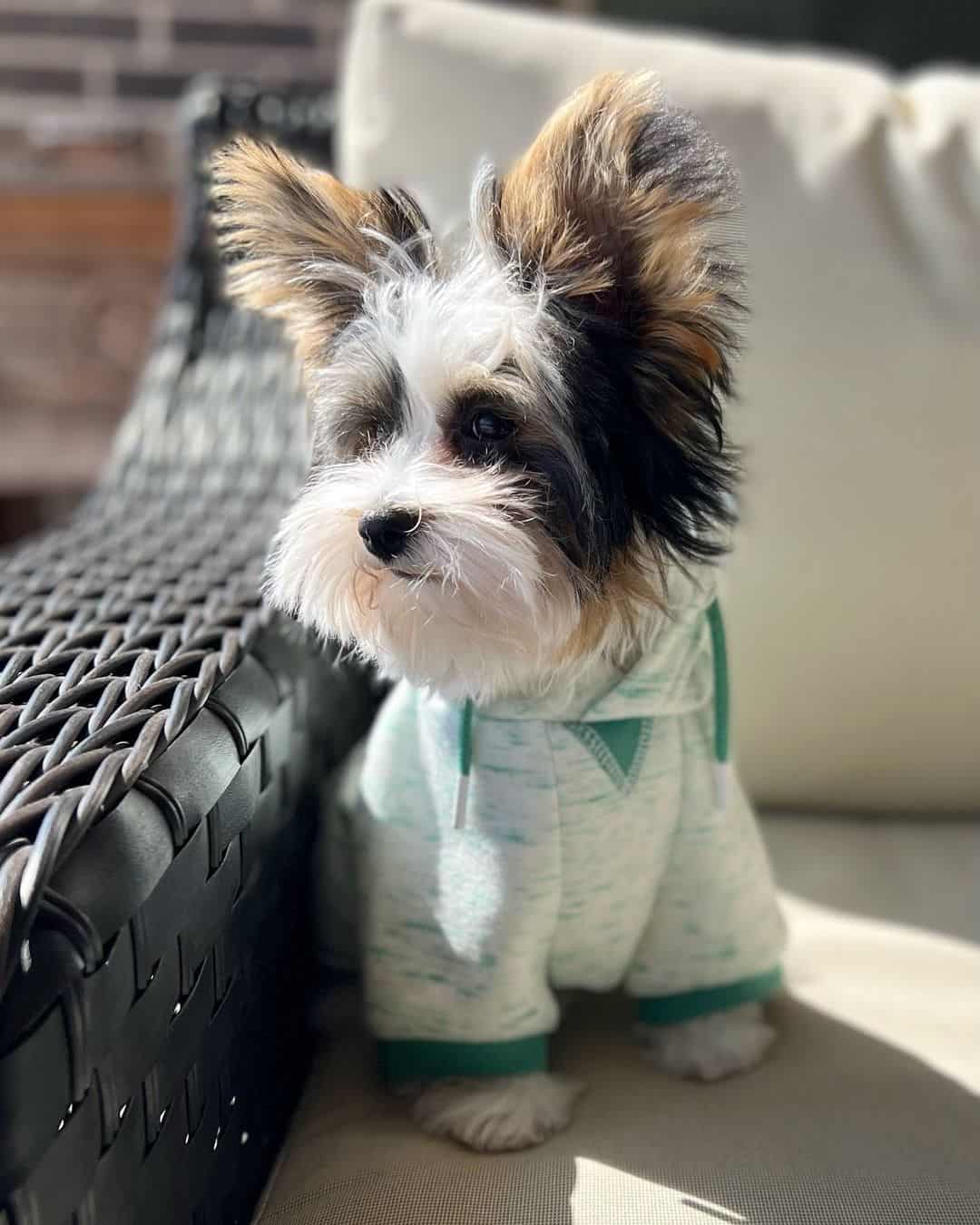
Photo from: @tonkas_takeover
The most popular of all the rare coat colors found in Yorkies is parti.
Technically, this is not a coat color. This is a pattern or a combination of colors that always appears together in a similar ratio.
Parti Yorkies are white, blue, and tan. Their tiny bodies feature white, while the face and/or the back will be covered in a combination of blue and tan. There isn’t really a rule with this coat color, since the combinations differ from one parti Yorkie to another.
I’ve also seen parti Yorkies covered fully in blue and tan streaks, with some white markings here and there..
Yorkies with more white on their coats are often called white Yorkies. But, that’s completely wrong, since there’s no such thing as a white Yorkie.
To get a parti Yorkie, the breeder must breed two pups with s-locus piebald genes, which are responsible for the white coat.
There was a lot of controversy about parti Yorkies. Back in the day, they weren’t accepted by the AKC. Lately, the situation has changed. The parti Yorkie is now accepted as a purebred Yorkshire Terrier, but he still can’t enter strict conformation competitions.
Even though people used to believe parti color Yorkies were the result of crossbreeding with white-colored pups like Poodles, Bichons, or Maltese, that’s absolutely wrong. Partis have proven themselves worthy and now enjoy their status as equals with other Yorkies.
Don’t get them mixed up with Biewer Terriers, as they look quite alike.
Golden Yorkie
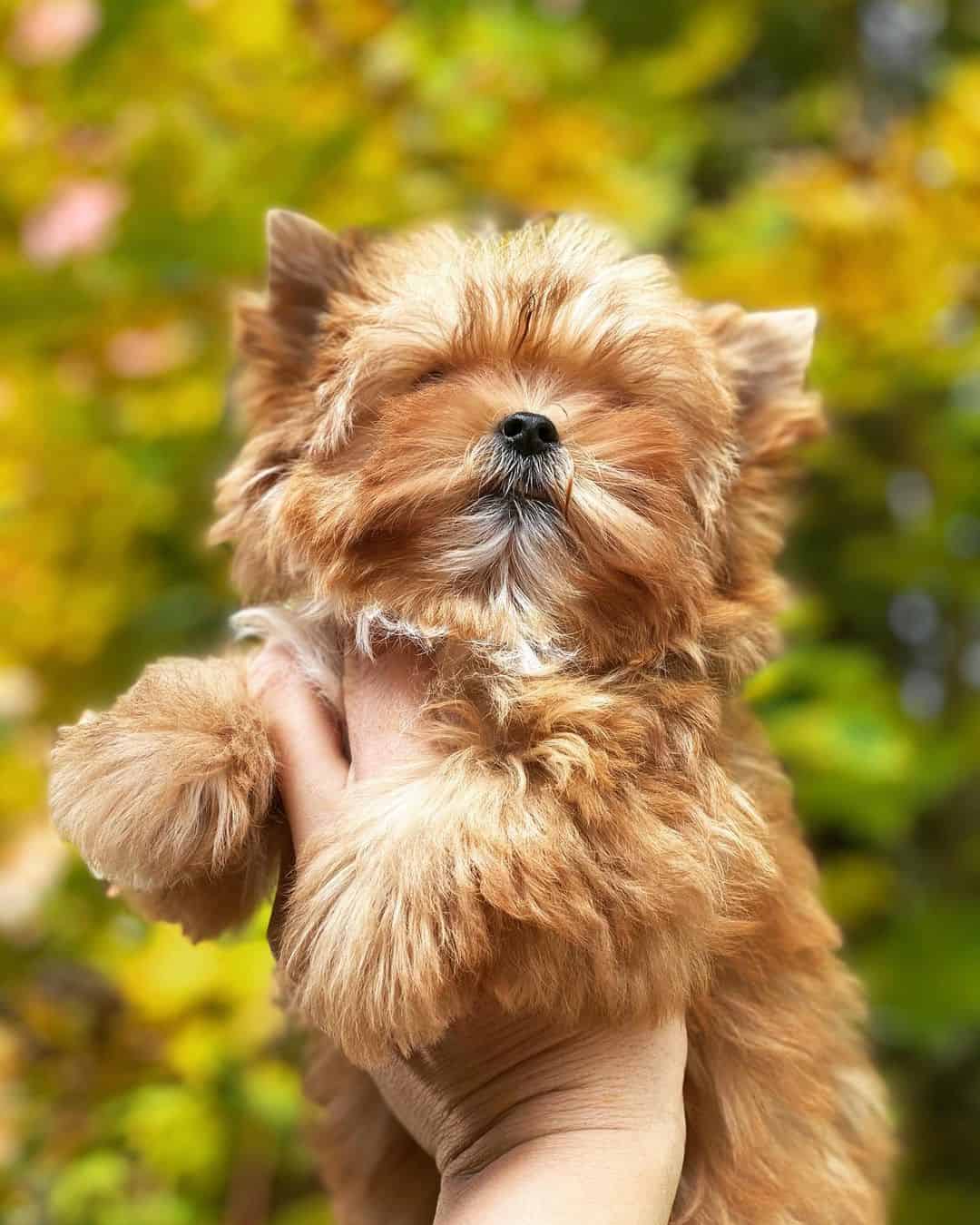
Photo from: @small_secret_york
Meet these blonde Yorkie dogs!
When you breed dogs with pheomelanin genses, you’re highly likely to get a Golden Yorkie puppy that really looks like it is covered in gold.
This is technically possible given how genes work, but with Yorkshire Terrier puppies, it’s unlikely.
Adult Yorkies will usually turn golden as they age, usually after the age of three years. Their silky coat will feature more golden than blue, and thus, the pups will appear golden.
Red-Legged Yorkie
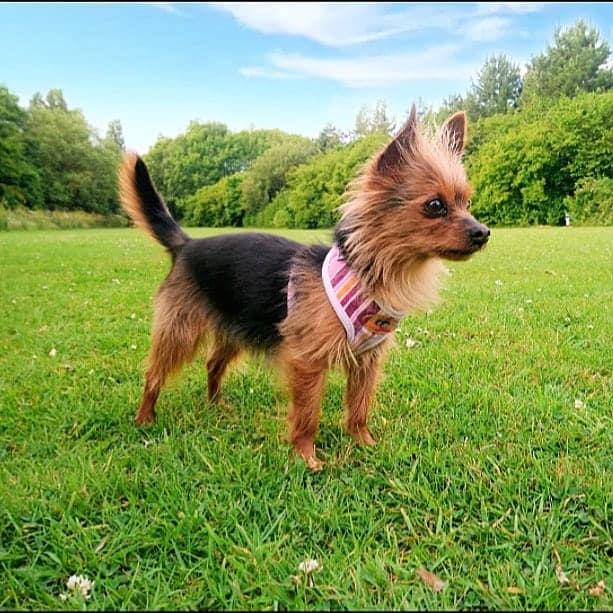
Photo from: @vintagepastimes
Red-legged or red Yorkies. Aren’t they lovely?
Well, they’re quite popular, I must add.
The red is not technically red because what kind of dog has a pure red coat? Think of it as a bronze shade.
The same gene. pheomelanin, is responsible for this coat color. However, with red Yorkies, the concentration of melanin is richer and thus, the golden color is not pure golden, it’s bronze and gives that characteristic red-legged Yorkie look.
The shades of red are usually concentrated on the pup’s chest, belly, chin, and of course, their legs!
Chocolate Yorkie
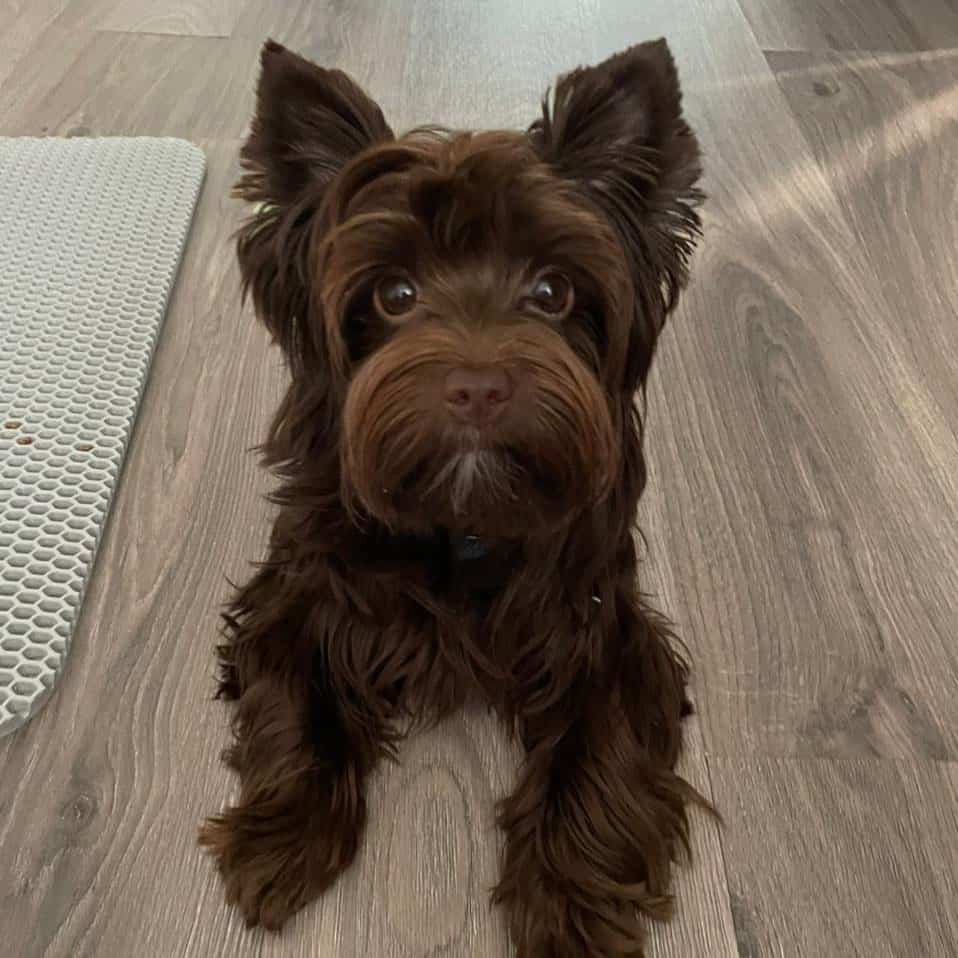
Photo from: @kennel_city_choco_fantasy
I bet you’ve already noticed a chocolate Yorkie somewhere.
The rich brown color can be either light brown or darker. The shades will vary depending on the Yorkie mom and Yorkie dad used in the breeding process.
To obtain a brown or chocolate puppy coat, the breeder must breed two dogs, one parti Yorkie, while the other dog can be any one of the standard colors. These dogs must have recessive b-allele genes, which are responsible for eumelanin’s lighter coat.
Like with parti Yorkies, some experts claim that this color can only be achieved from having bred Yorkies with other dogs breeds at some point in the past.
Are There Any Unaccepted Yorkie Colors?
As you can see, we have several rare Yorkie colors. And no, they will never be recognized by the official AKC or accepted in dog shows.
Even though the parti color has made some progress, the other colors are still considered unwanted.
Besides parti, red, golden, chocolate Yorkies, and white and black Yorkies are also unaccepted.
Pure white and pure black Yorkies don’t exist. They can only be a cross between other little dogs and Yorkies.
The breed standard is black and tan, therefore, no solids are included.
Does The Yorkie Color Change As The Puppy Grows?
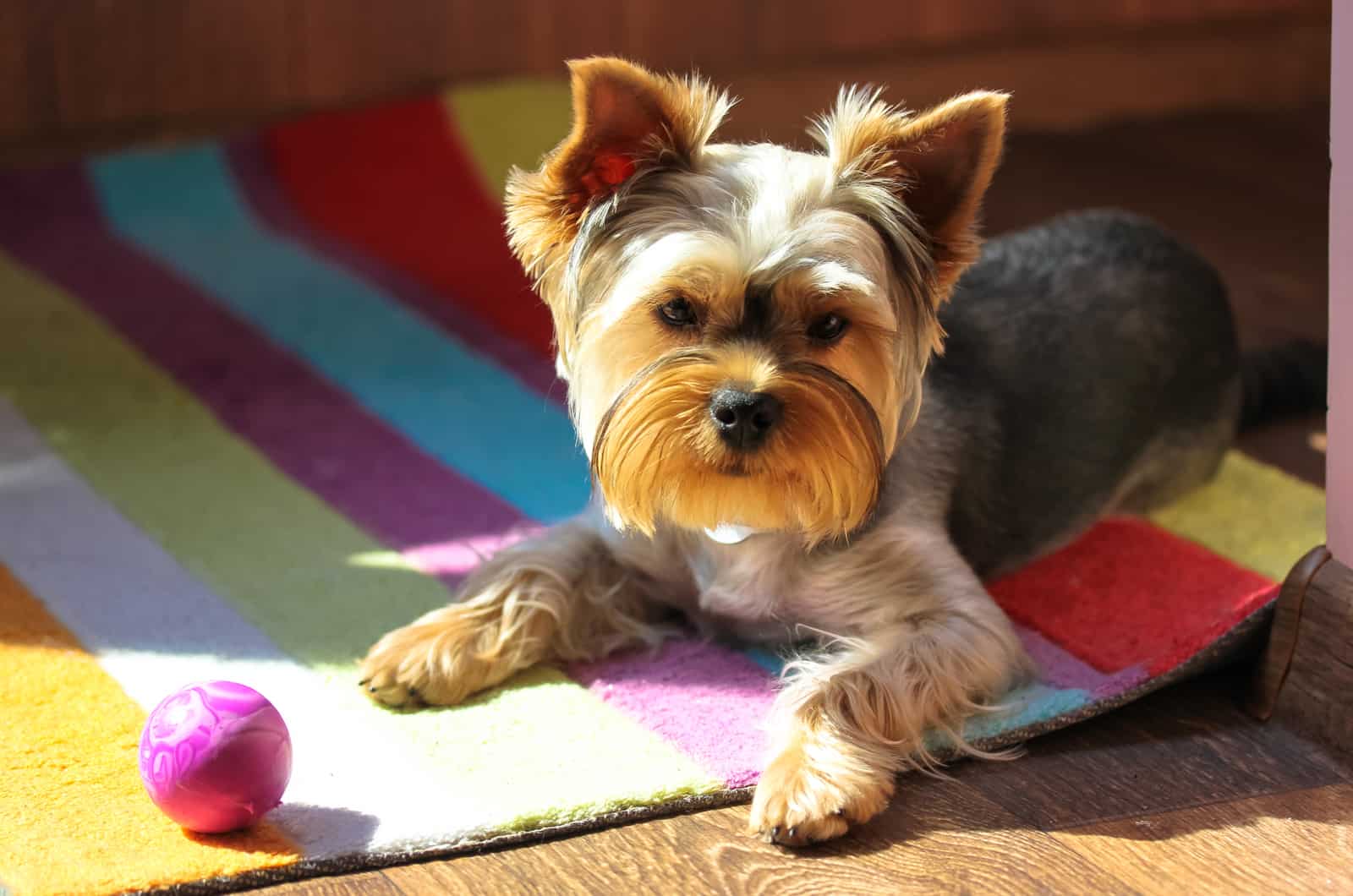
Genetics work funnily, but it’s not that hard to understand why a dog’s coat changes or why a dog is colored black and tan.
I will try to explain to you how dog genetics work, especially those responsible for coat colors.
The first thing you must know about genes is that there are both dominant and recessive ones. When one dog parent gives a dominant gene and the other gives a recessive gene, that dominant gene will show up in terms of specific coat color or eye color, which means, the recessive gene won’t be noticeable at all.
Depending on if your pup inherits all dominant or all recessive genes, certain coat colors will appear, some more rare than others.
Since we’re talking about coat colors, let me introduce you to the two main culprits of each of the mentioned Yorkie colors: eumelanin and pheomelanin.
Eumelanin is responsible for the black pigment, while pheomelanin is responsible for the red pigment. Depending on the concentration of each pigment, a dog may appear darker or lighter.
Purebred Yorkie puppies have dominant black sable eumelanin. But, that color won’t stay dominant for long.
Yorkies do change color as they grow up!
The black color will lighten up and become dark steel or blue. Some Yorkie pups will have body areas where eumelanin will completely disappear over time. The other pigment, pheomelanin, will take over and thus, produce a red-colored coat.
We can’t really tell which color your Yorkie will feature once he’s an adult. The puppy color will change over time, and the eventual adult color will show up somewhere between year two and three. That’s the same time that Yorkies reach full maturity.
Is There A Connection Between A Yorkie’s Coat Color And Its Behavior?
Dog experts have not found any links between a dog’s behavior and coat color when it comes to the Yorkshire Terrier dog breed. Some other dog breeds have noted more activity or more aggressive behavior when they feature a certain color, but not Yorkies.
All four standard-colored Yorkies have the same temperament, which is cheerful, affectionate, a bit feisty, but overall delightful.
When it comes to rare or unaccepted colors, we can’t really guarantee how the dog will behave. In most cases, unaccepted colors are a result of breeding a Yorkie with another dog breed. Since crossbreed dogs don’t really have a breed standard, it’s impossible to tell what their temperament will be.
Is A Coat Color Linked To Any Health Conditions?
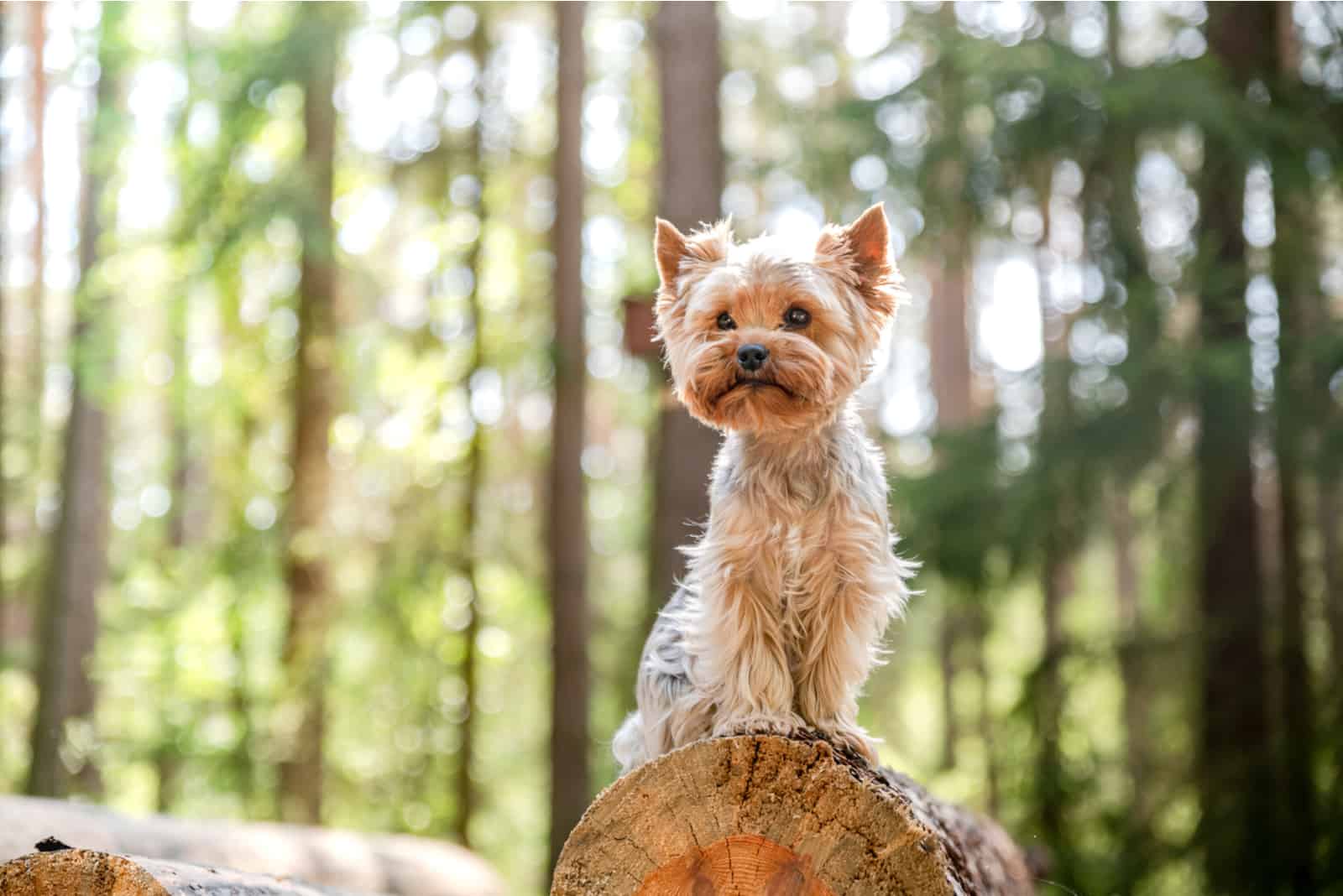
As with coat color and behavior, it’s also apparent that there are no links between health conditions and coat colors of purebred Yorkies.
Most often, coat colors and patterns that are linked with health issues are white and merle. That’s because they’re the work of recessive genes or genes carrying albinism. Pure white dogs are bordering on albinism in lots of cases. But that, once again, depends on the dog breed.
As far as the Yorkshire Terrier breed is concerned, black and tan, blue and tan, black and gold, and blue and gold as standards are all considered healthy dogs. There aren’t any conditions linked to their coat colors precisely. Of course, some minor health problems will occur occasionally, as with other breeds.
However, rare colors, as a result of questionable breeding practices, are often carriers of numerous diseases.
For example, parti Yorkies, blonde, or chocolate Yorkies are carriers of cataracts, bronchitis, digestive system problems, and many more issues.
The mentioned health conditions are only the tip of the iceberg. More severe problems include those you can’t really see, but they are there. Genetic conditions affect puppies in a great way, especially future offspring.
So, if that puppy with severe problems breeds and produces more puppies, the litters will end up carrying the same genes that cause health problems.
Grooming A Yorkie: How To Take Care Of Your Yorkie’s Coat
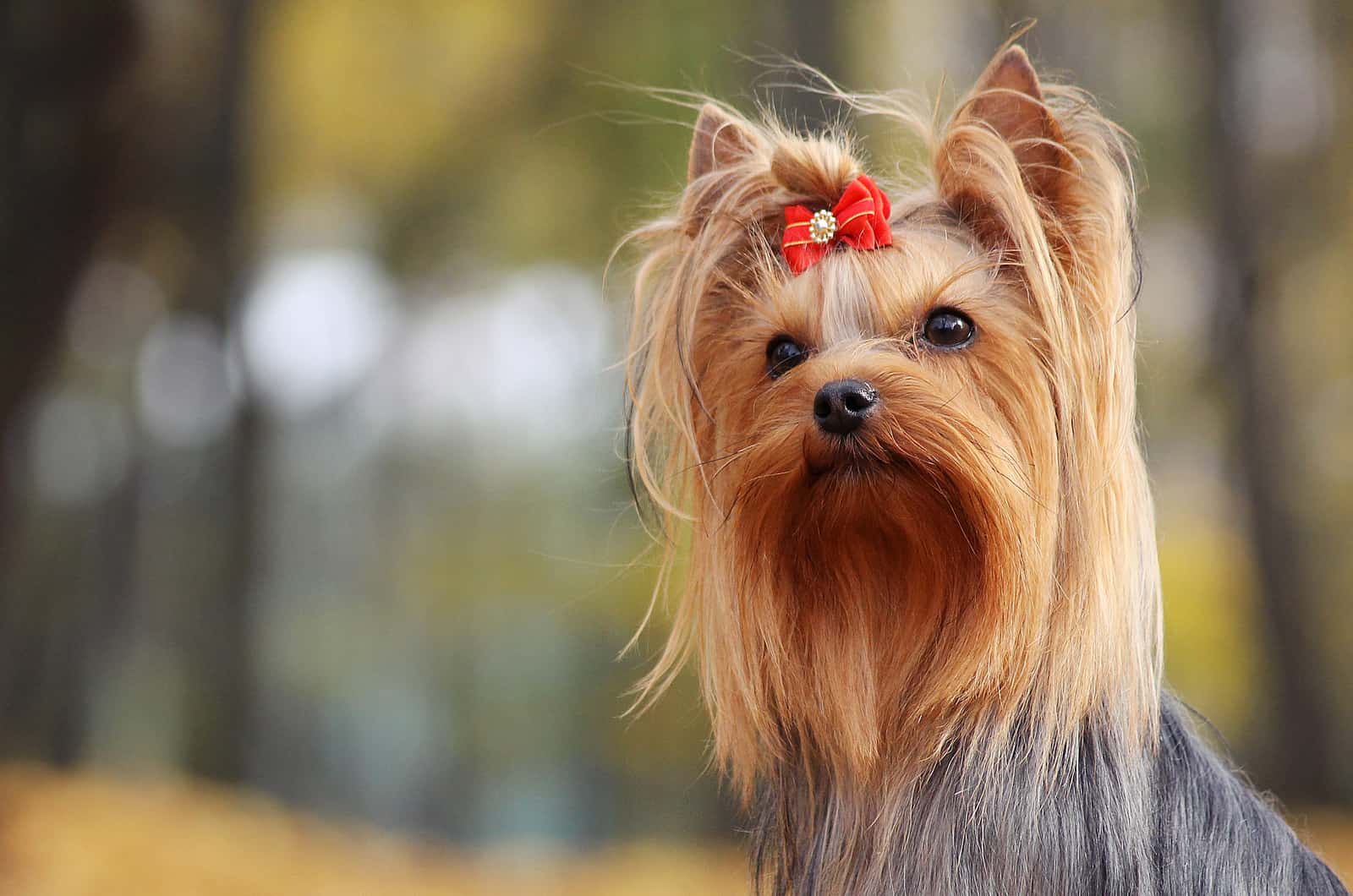
The first thing you’ll notice when you look at a Yorkshire Terrier is its silky coat. Even before touching it, you can tell it’s silky because it looks so shiny. But, keeping it shiny, silky, and soft is a big task for every Yorkie owner.
Let’s face it, Yorkies need a fair amount of grooming, especially those who feature a floor-length coat. Many Yorkie owners opt for a puppy cut, so they don’t have to trim the hair all the time or brush it extensively.
Let’s check out some fancy Yorkie hairstyles you can either learn how to do at home, or hire a professional groomer to do.
Yorkie Hairstyles
Yorkies have hair, not fur like many dog breeds. Their hair can be cut in many ways but the most popular styles are the following:
puppy cut;
teddy bear cut;
show cut;
kennel cut;
Schnauzer cut;
Westie cut;
3 layer cut;
flared cut;
squared puppy cut.
The puppy cut is the most popular of all the Yorkie hairstyles because of its easy maintenance. The hair will be short, never over 2 inches, and it will be a breeze to brush it. Since Yorkies need brushing on a daily basis, this is quite convenient.
Show cuts are wonderful, but I wouldn’t recommend it if you’re not planning to enroll your dog into some dog shows. These pups have floor-length hair that is prone to getting tangled. It is a hard task to keep it mess-free. You can either learn how to groom at home or take your dog to the salon.
I wouldn’t recommend getting a Yorkie if you don’t have lots of free time on your hands to take care of its grooming needs. Besides brushing, Yorkies need to be bathed on a schedule. These dogs shouldn’t look scruffy or unattended, or they’ll simply look too sad.
Which Eye Colors Do Yorkies Feature?
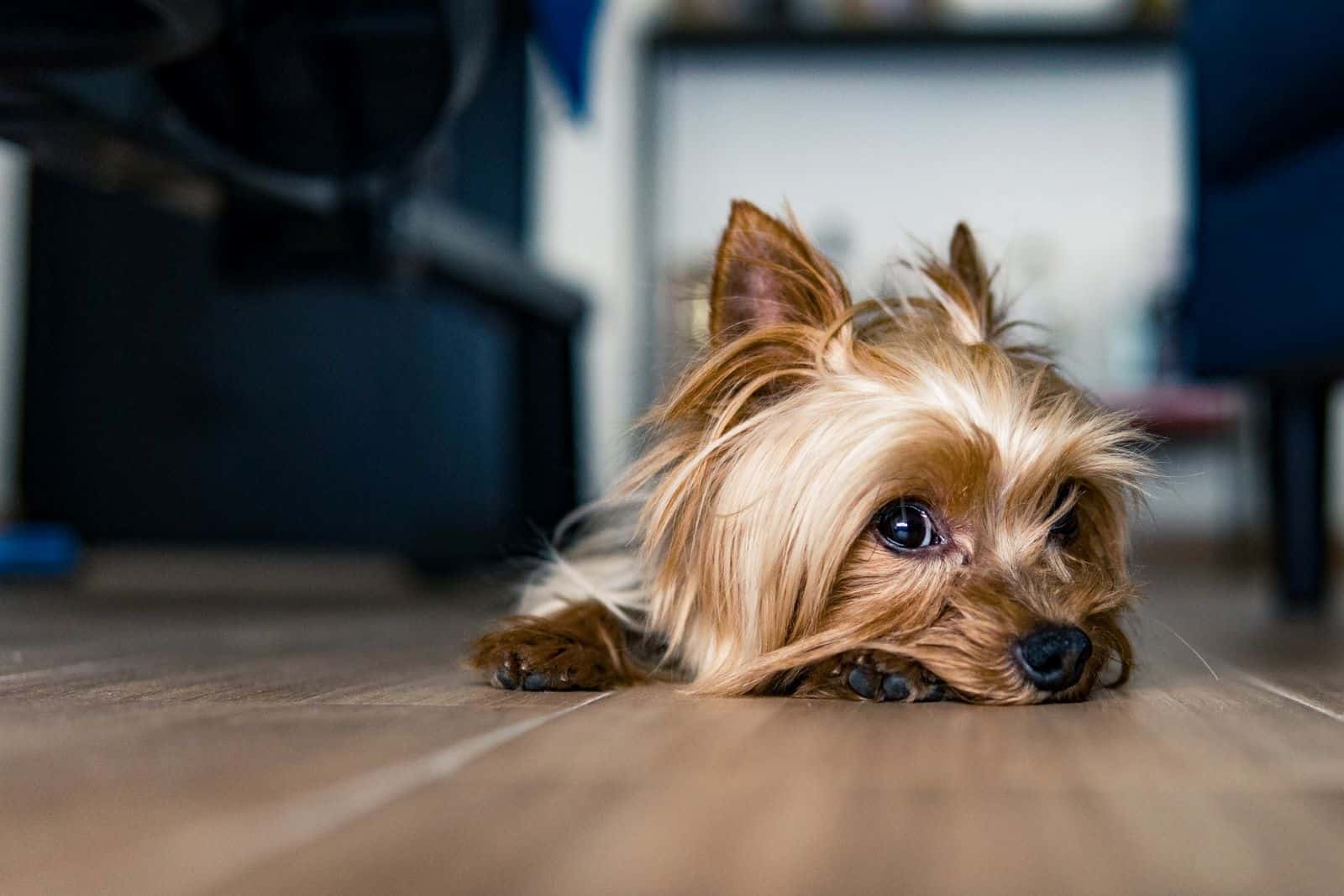
The colorful game of coat colors is only the beginning. We can also talk about colors when we mention a dog’s eyes. It’s quite interesting to learn about dog eye colors, since some of them can be a sign that something’s wrong with your pooch.
For the Yorkshire Terrier, standard eye colors are black and brown. Fortunately, there aren’t any recognized or unrecognized eye colors.
Your Yorkie puppy can easily have light brown eyes, green, hazel, or dark blue. There’s really no problem with Yorkie eye colors. But, green and dark blue colors are more difficult to find than dark brown or black.
As you can see, the eye color game is the same as with humans. Brown eyes are more dominant than blue eyes, and that’s simply the way things work.
FAQs
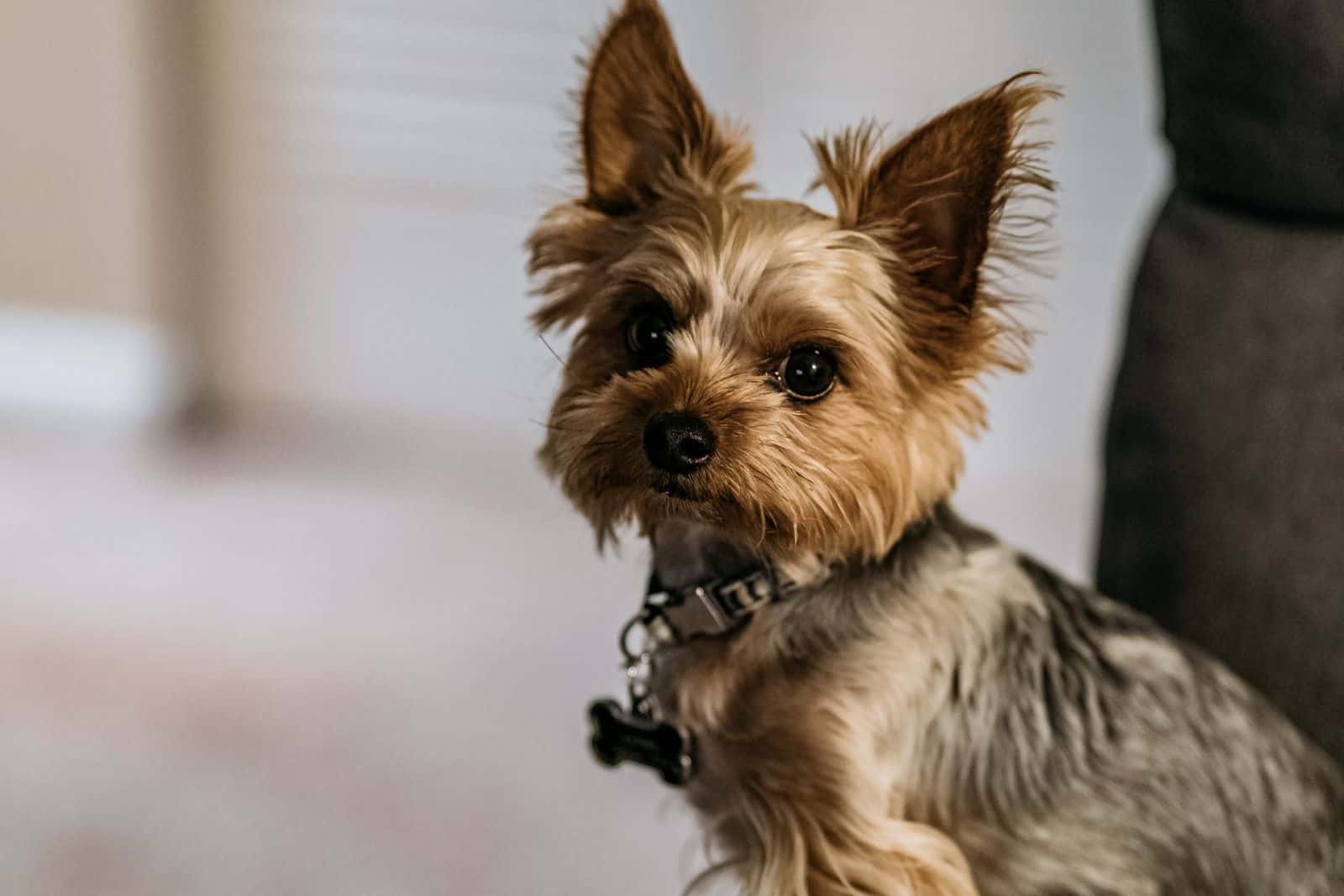
What Is The Rarest Color Of Yorkie?
Of all the Yorkie colors I’ve mentioned today, can you guess which is the rarest?
It’s the chocolate Yorkie!
The chocolate or the brown color is a result of mixing a parti Yorkie and any other Yorkie. Since parti Yorkies are already among the rare Yorkie colors, finding one to breed from to get a chocolate puppy will be tricky.
Some experts also claim that chocolate Yorkies are just a cross between a Yorkie and another dog breed. Since Dachshunds are usually chocolate, they assume the other parent is a Doxie.
But, I’d take that with a pinch of salt, since I really haven’t noticed any Doxie genes in chocolate or brown Yorkies.
Does The Coat Color Affect A Yorkie’s Purchase Price?
The general rule with all dog breeds is, the rarer the coat color is, the more expensive the puppy will be.
Yorkies are great companions and wonderful family dogs. The Yorkie breed is known for being a bit pricey, or at the higher end of the scale anyway. It’s their kind temperament, Yorkie’s silky hair and hypoallergenic traits, and small size that dictate the high price.
While standard colors will cost less, unusual coat colors, like parti or golden, will cost more. You can absolutely say that the coat color does affect the price, since parti Yorkies are considered one of the most expensive of all Yorkies.
Do Unusual Colors Or Patterns Appear In Yorkies?
As with any other dog breed, unusual colors and patterns and their possibility will always be a burning question. Some popular dog breeds are actually available in all black or all white coat colors, or even brindle patterning.
However, that’s not the deal with the Yorkshire Terrier’s coat. These pups are not likely to come as pure black or pure white Yorkies.
Your average Yorkie might look all black. But, if you get close, you’ll notice tan coat streaks, which makes the dog black and tan or black and gold, depending on the concentration of the color.
So, next time you see a black or white Yorkie, you can be sure it’s a work of crossbreeding, which always brings health problems. These small dogs can’t be naturally found in black or white, so don’t push it and don’t demand a coat color just because it’s attractive at the moment.
What Are Blue Born Yorkies?
This is not a separate type of Yorkie. The Blue Born Yorkie is still a purebred Yorkie, just with an unusual coat color.
These dogs are born featuring a steel blue color. Despite their lovely appearance, these dogs should not be advertised as good pets to own. And, there’s a perfectly good reason behind that.
You see, steel blue Yorkies carry genes that will lead to numerous severe health issues. This coat condition is lethal and not many Blue Born Yorkies will live after their first birthday.
When you see a puppy advertised as a Blue Born Yorkie, you can be sure that that’s a dog with serious faults and as such, should not be adopted. If you buy these Yorkies, you’re only supporting unethical breeders.
Final Words
Of all these Yorkie colors, which is your favorite?
Every new dog owner will find himself in trouble, trying to figure out which coat color to pick out of all the available ones. Sure, there are lots of other things that are more important when we pick a puppy, i.e. the breeder or the health condition, but let’s just enjoy the little things.
If everything’s alright with the chosen puppy, why not play the colors card and pick the puppy you like the most?
As far as the American Kennel Club (AKC) is concerned, Yorkies only come in a few accepted colors. Unusual or rare colors will never be a part of the official line up of Yorkie colors.
Before you bring your pup home, ask yourself a few questions. Does the coat color really matter to you? Are you willing to pick beauty over good health? Are you planning to list your pup into dog competitions?
Only when you answer these questions, will you know which of the Yorkie colors listed today to pick!
Read Next:
• Whippet Colors: Everything You Need To Know!
• 8 Yorkie Breeders In Florida That You Can Trust
